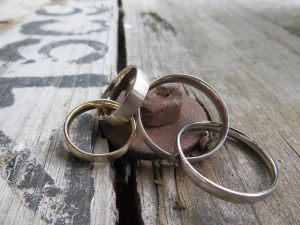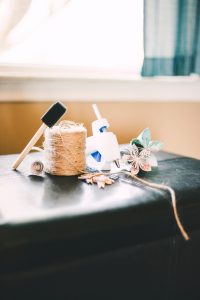Sterling silver rings and necklaces can last practically forever if properly cared for. However, silver jewelry can become so much more if the owner knows how to adjust and improve the piece. Can you solder sterling silver? If you have the knowledge of doing so, you can solder sterling silver to improve, fix or adjust it to your needs and desires.
Can You Solder Sterling Silver
Soldering is essentially using heat (a torch) to fuse together two metal objects with a piece of solder in between the two. This can actually be done with many other metals that is typically used for accessories other than sterling silver such as copper and gold. Soldering silver or other metals at home can be quite dangerous as well as difficult. Before starting this task, the area should be properly prepared and the correct attire needs to be worn.
The Right Materials
Charcoal Soldering Block or Kiln Brick
The right surface to doing anything that include metal and heat is either a charcoal soldering block or kiln block, However, the kiln block is second recommendation in the case that a charcoal block in not available. Charcoal deflects heat and creates a high temperature environment that silver needs to melt. Some people have recommended other materials for home DIY projects that include magnesia block, ceramic or solderite board.
Torch
A butane torch or small oxy-acetylene is necessary when soldering sterling silver. A small butane torch is the best option as it heats at a lower heat and is meant for a smaller job that requires more precision.
Flux
A cleaning agent is needed for the two pieces being conjoined before applying heat, and that cleaning agent is called flux. Flux removes any oxidation before soldering to prevent beads or bubbles from forming. Most people apply this with a small brush or a cloth. Flux is also available in spray form as well.
Steel Wool and Cloth
While flux cleans right before the heat is applied, cleaning the sterling silver with steel wool and cloth will take off any contaminants from heavily handled pieces.
Tweezers
It goes without saying that touching hot metal is not safe and can cause horrible burns. Soldering tweezers or small copper tongs will be a great assistant in this task to avoid burning your fingers and hands. Copper tongs are best when handling anything anything that may conduct high heat.
Proper Clothing
Protection is key. Keep yourself safe with fitted clothing, closed toed shoes, a canvas apron or denim apron and goggles to protect your eyes. Goggles are essential in protecting your eyes from hot metal splatter, especially since you will need to be looking very close to see what you’re doing. If you have long hair, be sure that it is pulled back into a ponytail or bun. Long loose sleeves need to rolled up or pulled back.
Soldering Wire or Sheets
Solder is the material that is added between the joints to conjoin them. It is an alloy made up of silver and other metals, which melts at a lower temperature than sterling silver. Therefore, when heat is applied to it, soldering silver acts as a metal glue. When beginning, always start with soft solder as it is easiest to work with.
Finishing Touches
At the end of your soldering task, you will need to clean and cool your new creation. Have beside you a cup, bowl or bucket of tap water and a cooling surface area. The cooling area can be on the same heat resistant block that is on your work area or a pumice stone.
How to Solder Sterling Silver
- Open windows to create ventilation and cool the room.
- Conduct initial cleaning of the sterling silver with steel wool and a cleaning cloth. Do this away from your soldering area and clean away metal dust when finished.
- Apply flux with brush or cloth on joint area where heat will be applied.
- Set up silver pieces on the block as you want them to be soldered together as close together as possible.
- With your tweezers, take a piece of solder on the crack where the pieces will be joined. Do not put too many, as the solder metal will spread and fill up the gaps.
- Hold the torch away from the jewelry and adjust the flame, then start by holding the torch about 4 inches away from the silver pieces. Don’t apply the heat directly to solder and focus more on the sterling silver. When the silver gets hot enough it will melt the solder fast and the soldering piece will melt into the spaces it needs to fill.
- Let the new jewelry cool off for about a minute and then dip it into your cup or bowl of water.
- Let dry and pat dry with a cleaning cloth.
In Conclusion
Can you solder sterling silver? Similar to the process of removing super glue, you need to ensure you have what you need to solder silver. As long as you have the right materials and set up your work area properly, you can solder any of your sterling silver accessories and possessions from your own home.

